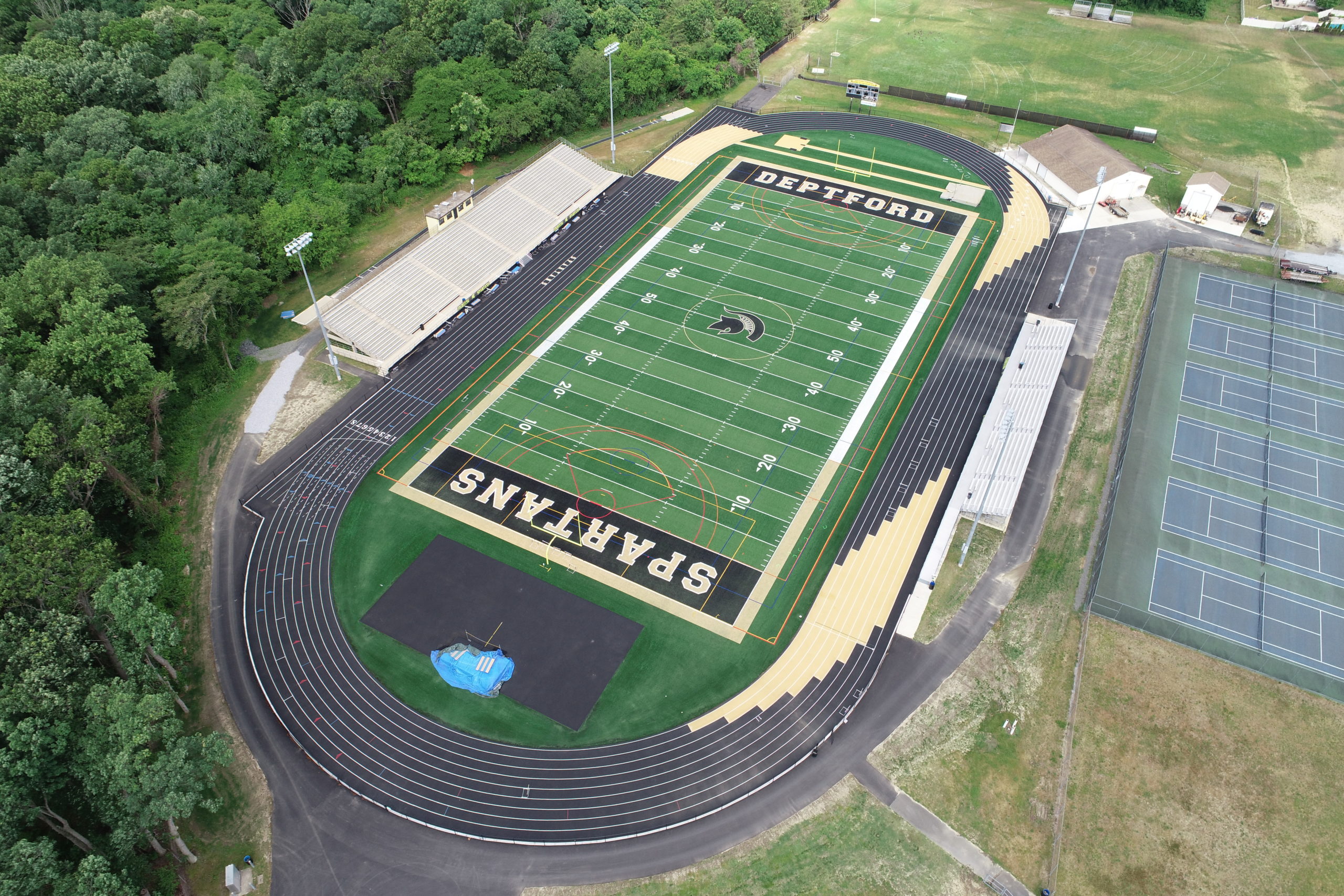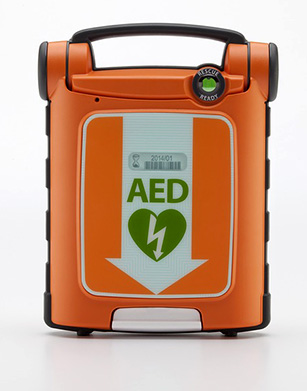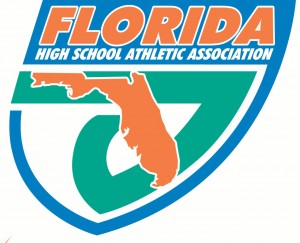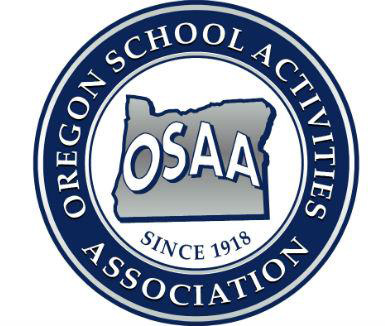Drawing a Line: Markings on Synthetic Turf
Turf fields have so many points in their favor. They’re playable almost immediately after a rainstorm, hold up to back-to-back games, and always have that lush, bright green color. Oh, and they don’t need mowing but they do require regular irrigation to keep the surface cool, particularly in hot weather – which, in turn, means paying attention to drainage in order to make sure it is functioning efficiently.
A few trends at work on synthetic fields are the increasing use of school logos or images of mascots (generally the center of fields) as well as the logos of sponsors (often found on or closer to the sidelines). Fields are also being installed with different colors of turf in strips to mimic the mow patterns used in natural grass. Some field owners are opting for turf colors other than green to set their facilities apart. The graphic design of athletic fields is an evolving science, and we can expect even more change over time.

One of the few things about synthetic fields that can give maintenance crews pause is the issue of game lines. Many turf fields come with inlaid lines (meaning they are added to the turf during the manufacturing process). Fields that are lined using this method generally have markings for one or more sports. For purposes of clarity, these lines are different colors, such as white for football, yellow for soccer, and so on.
One challenge is the possibility that the field will need to host a sport for which it isn’t marked. This situation most commonly presents itself when schools are let out for the summer and fields are pressed into service to host youth camps, clinics, and tournaments.
One of the top trends in these youth events is that of small-sided sports – that is, the process of creating multiple smaller playing fields on one field – for soccer, field hockey, and lacrosse. And whether that means tournament play in a format such as 3v3, 4v4 (or anything else), or whether it means using the smaller spaces to provide more intensive instruction, the result is the same: a need for multiple playing spaces to be delineated.
Unlike grass fields, however, turf requires more care when it comes to marking new lines. The same paints and products that are used on grass can’t be used on turf, since many won’t wash off. Sports field specialty contractors advise keeping open the lines of communication with directors of any incoming tournaments, camps, or clinics. Find out how the fields will be used and set forth guidelines on what can – and can’t – be done to the synthetic turf surface. (Another hint: If extra goals will be needed, tournament owners should be responsible for supplying them).
One way to delineate new playing spaces is by using colored plastic cones. These are inexpensive, easy to order, and can be replaced if necessary. They’re also weatherproof and will stand up to being knocked over if balls or players go out of bounds. In addition, they can be easily moved to create different or larger spaces.
Need a slightly more long-term (but not permanent) fix? Check with your contractor, who may be able to recommend a marking product that will work for your specific brand of turf, and for the type of play and the duration you’ll need it to be in use.
Be sure to ask all possible questions prior to purchasing a product:
- What will be needed to remove the lines? Will the product simply break down over time (and if so, how long will that take?)
- Can the fields be hosed off or brushed in order to remove the markings?
- Will temporary lines need to be reapplied after a rainstorm? (And if so, will the fields need to fully dry before lines can be reapplied?)
- Will the fields still show marks when school reopens?
- Can the product be used in situations where it might be subject to extreme heat?
Find out all you can about any product that might be used. Read reviews and see what other field owners have said about it. (And if you have your doubts, talk to your contractor). Also, if you don’t happen to have a crew member on hand with expertise inline application, invest in having temporary lines applied professionally; you’ll have a better end result.
Something else you can do is familiarize yourself with any sports your facility will be hosting over the summer. If small-sided sports are on the agenda, learn all you can about the formats that will be used and the subsequent dimensions that will be needed; these will depend on the governing body:
- USA Lacrosse has a small-sided version of the game called Flex6 Lacrosse, while World Lacrosse has a format called World Lacrosse Sixes. There are slight variances between the two formats.
- US Soccer has been implementing new standards nationwide, known as Player Development Initiatives, or PDIs, allowing for small-sided games.
- On the youth soccer travel tournament circuit, independent event owners such as 3v3 Live are putting on events nationwide. Warrior Soccer, another event owner, operates 3v3 and 5v5 tournaments – as do plenty of others.
- USA Field Hockey has created its own small-sided game, GAME ON Hockey – GO Hockey for short. With the GO Hockey format, one full-size field (100 yards x 60 yards) can be divided into eight GO Hockey playing fields.
» ALSO SEE: Psych-Safety — The Number One Area Coaches Need to Develop
Diagrams for field layouts, as well as rules and other information, can be obtained from the websites of the national governing bodies mentioned above.
Need more information about synthetic fields, including maintenance? The American Sports Builders publishes Sports Fields: A Construction and Maintenance Manual, covering both natural grass and synthetic turf sports fields. It can be purchased from ASBA by visiting the website, sportsbuilders.org, and mousing over the top blue toolbar where it says “Resources.” A drop-down menu will appear, including “Publications.” The book may be purchased in both hard copy and pdf format.





